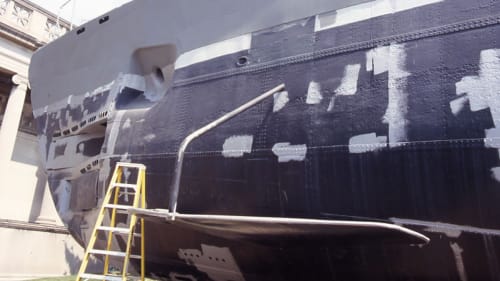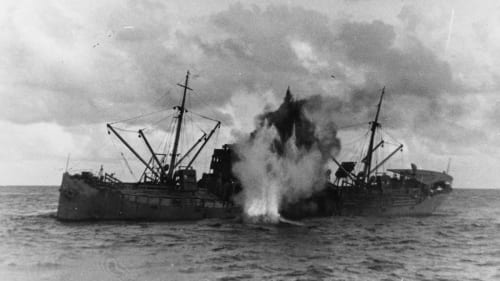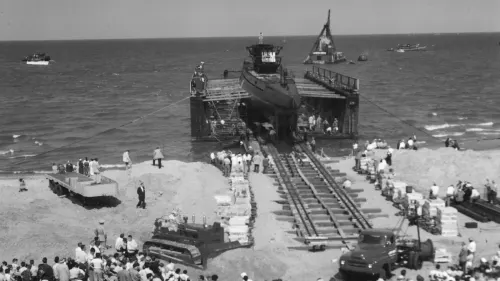The hunt intensifies
On May 15, 1944, Task Group 22.3 sailed from Norfolk, Virginia for an antisubmarine patrol near the Cape Verde Islands. For weeks, Captain Dan Gallery and the six ships in the Task Group searched the area for a U-boat, assisted by daily location briefings transmitted from the F-21 submarine tracking room back in Washington, D.C. The Task Group used all its technologies and determination to locate the target U-boat. Wildcat fighters from the USS Guadalcanal searched from the sky as sonar and hydrophone operators listened in the sea, but they couldn't find the U-boat. A frustrated Gallery called off the search and began to head toward Casablanca for fuel. Then, minutes later, the sonar operator on the USS Chatelain reported a possible U-boat contact.
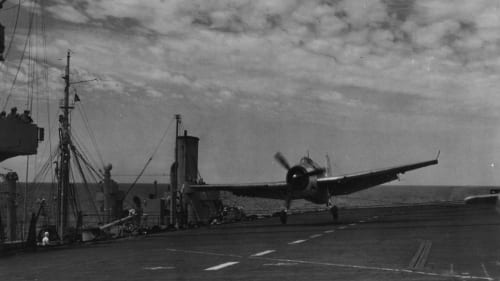
Attacking the U-505
On June 4, 1944 at 11:10am, the USS Chatelain reported a sonar contact and the Task Group jumped into action. The USS Guadalcanal could not attack without damaging itself so Captain Gallery moved the ship quickly out of harm's way. Supported by the Destroyer Escorts USS Pillsbury and USS Jenks, the USS Chatelain swiftly attacked. As the sonar crew maintained contact with the submerged U-505, the USS Chatelain attacked with a salvo of hedgehogs that missed. While the USS Chatelain opened the range to turn and make another attack, two fighter planes from the USS Guadalcanal fired their guns into the water to help mark the location of the submerged U-505. The USS Chatelain then fired a pattern of depth charges, forcing U-505 to the surface.
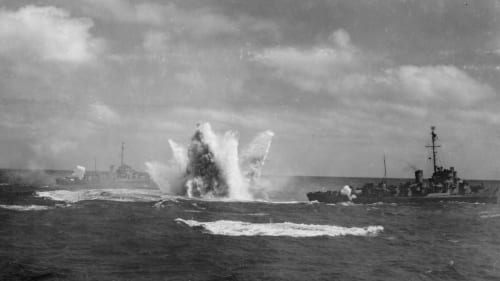
Saving U-505
While the USS Chatelain and the USS Jenks picked up survivors, the USS Pillsbury sent its whaleboat to the U-505, where Lieutenant (junior grade) Albert L. David led a nine-man boarding party onto the sub. Despite the probability of the sub sinking or blowing up at any minute, and not knowing what form of resistance they might meet below, David and his men climbed down the hatch. A quick examination proved the U-505 was deserted (except for one dead German sailor on deck, the only fatality of the capture). The boarders then set about disconnecting scuttle charges, closing valves and bundling up charts, codebooks and papers as quickly as possible.
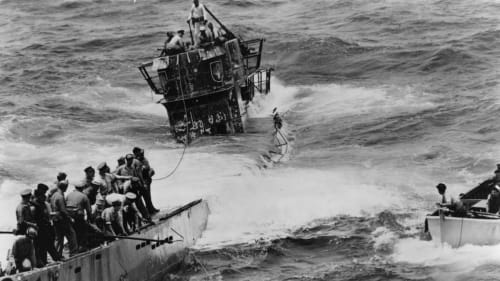
The boarding party
Once the Germans had abandoned the U-505, Task Group 22.3 dropped whaleboats into the water with crews trained in boarding and salvage procedures. Some of the crews rescued the surviving German sailors from the sea. One whaleboat from the USS Pillsbury pulled up alongside the damaged sub. The crew's mission: to board the U-boat, overpower any remaining German sailors and take control of the submarine. It was an incredibly dangerous operation. The U-boat was going in circles, she was flooding with seawater and was most likely rigged with explosive charges intended to prevent her capture.
- Albert L. David, Lieutenant, Junior Grade, U.S.N.
- Chester A. Mocarski, Gunner's Mate, First Class, U.S.N.
- Wayne M. Pickels, Boatswain's Mate, Second Class, U.S.N.
- Arthur W. Knispel, Torpedoman, Third Class, U.S.N.R.
- George W. Jacobson, Chief Motor Machinist's Mate, U.S.N.
- Zenon B. Lukosius, Motor Machinist's Mate, First Class, U.S.N.
- William R. Riendeau, Electrician's Mate, Third Class, U.S.N.
- Stanley E. Wdowiak, Radioman, Third Class, U.S.N.R.
- Gordon F. Hohne, Signalman, Third Class, U.S.N.R.
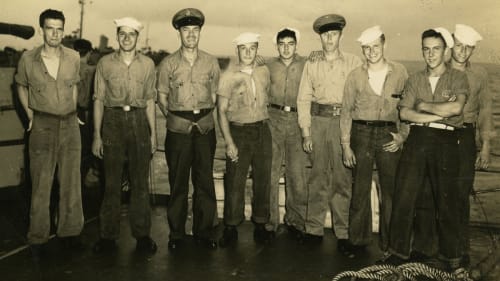
About this photo
The photo above has an interesting history. The photo was supposed to depict only the members of the boarding party, but Chief Commissary Steward Lee Roy Lisk was mistakenly included. When the mistake was discovered much later, the U.S. Navy removed Lisk from the photo and shifted the three men on the right toward the middle. The altered photo was made public on May 16, 1945 with a press release announcing for the first time the capture of the U-505. Unfortunately, the Navy's retouched photo did not include Lt. Albert David. To show the entire nine-person boarding party, the Museum added Lt. David to a photo in the exhibit.
Voyage to Bermuda
Capturing the U-505 was only part of the battle. Orders came in for Captain Daniel Gallery to tow the U-boat to Bermuda so the U.S. Navy could study her military secrets. The trip would cover 2,500 nautical miles — the longest tow of the war. The lengthy voyage was not Gallery's only challenge. He had a more pressing problem: the sub was in danger of sinking! The U-505 was full of seawater, her conning tower barely above the surface at times. To make matters worse, her rudder was stuck hard to starboard, making towing very difficult. "When it was touch and go whether the sub would remain afloat, [Commander Earl Trosino] spent hours down in the bilges, crawling around in the oily water under the engines, tracing pipelines and closing valves to make the boat watertight. He risked his life many times by squirming into inaccessible corners under the floor plates where he wouldn't have a chance to escape in case the sub started to sink. Thanks to Trosino's uncanny instinct for finding the right valves, and his total disregard of his own safety, we succeeded in saving the U-505." - Captain Daniel Gallery, "We Captured a German Sub," The Saturday Evening Post, August 5, 1945
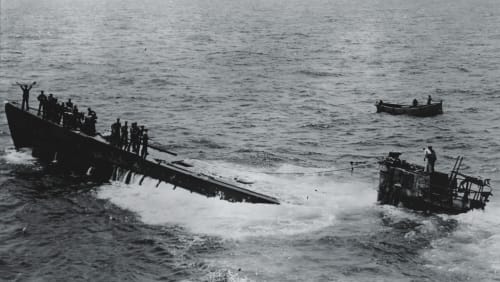
Prisoners of war
Only one German sailor, Gottfried Fischer, perished during the capture of U-505. The Task Group rescued the remaining 58 crew members from the sea — a far more agreeable fate than most U-boat sailors experienced. USS Guadalcanal transported the men to Bermuda, where they were held for several weeks to await stateside preparations for their POW camp in Ruston, Louisiana.
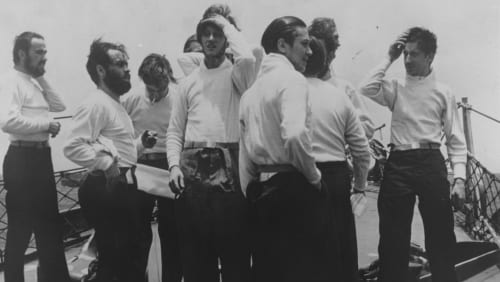
This riveting wartime story comes alive
Experience the only German sub in the U.S. in this dramatic exhibit and national war memorial to American sailors.
